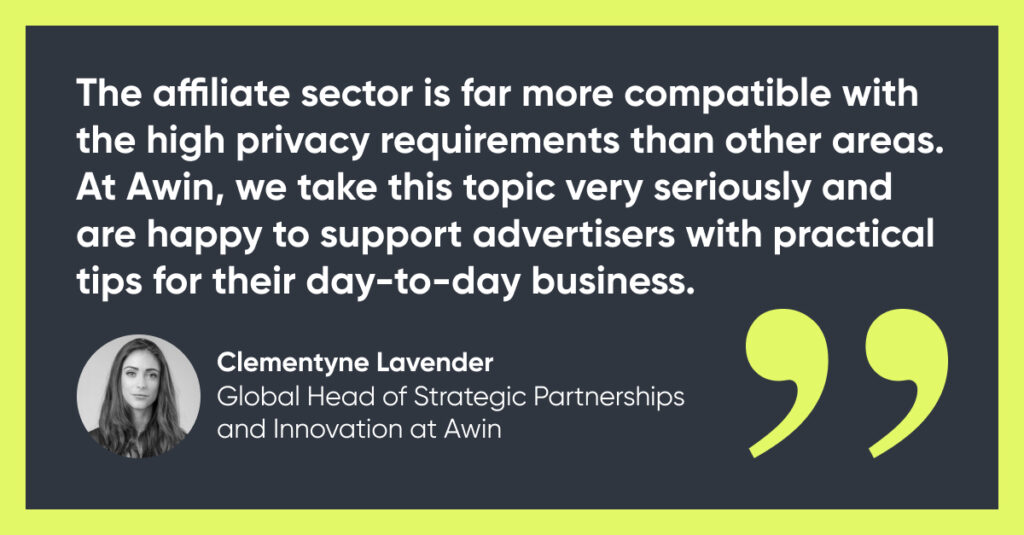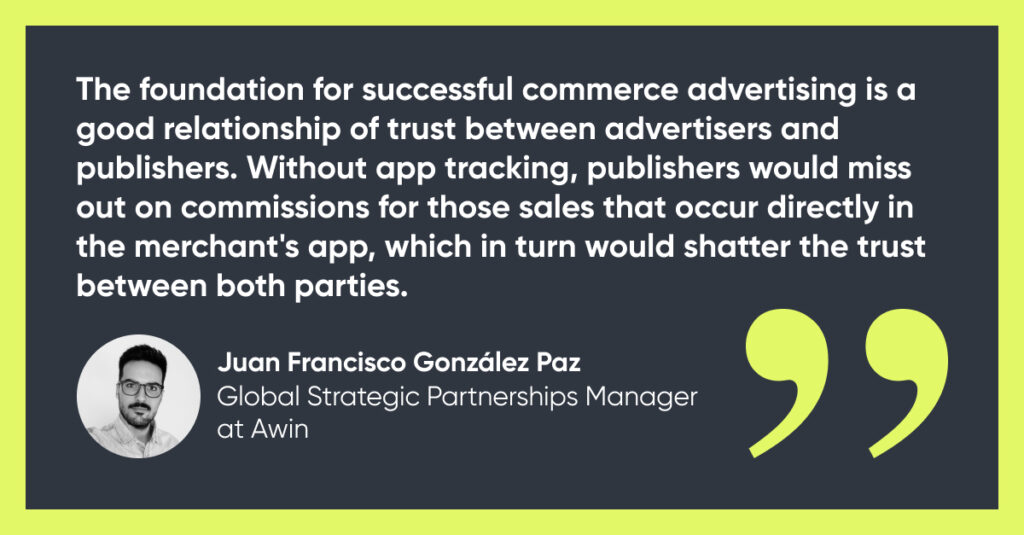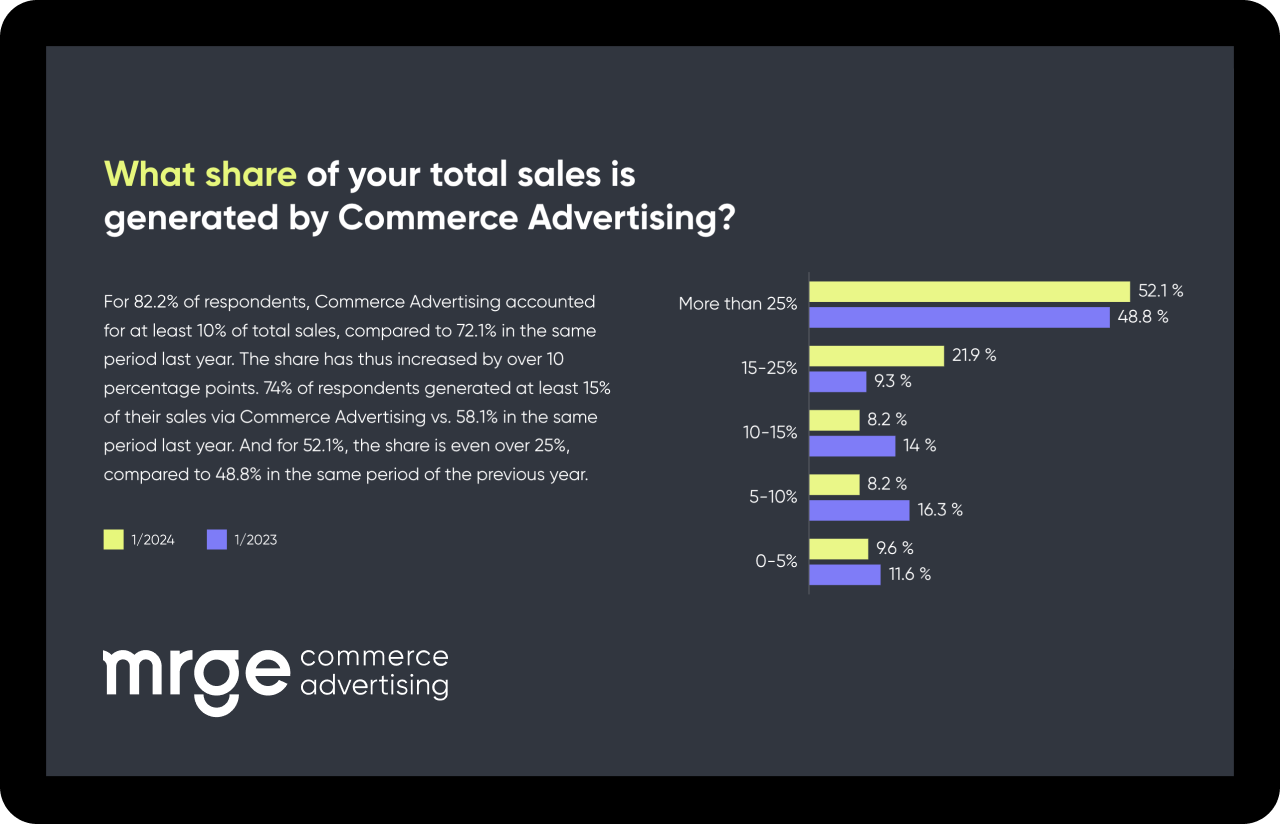Key Take Aways
Executive summary: 5 key take-aways for quick readers
- In-app sales and commissions for publishers are continuously increasing.
- Advertisers get much more accurate insights with app tracking.
- Publishers would lose valuable revenue potential without app tracking.
- App users record higher AOV, lifetime value (LTV) and conversion rates.
- Apple's App Tracking Transparency is not the end of app tracking.
App Tracking – what was that again?
App tracking is about evaluating the user activities both around and within an app and deriving learnings for the company from them. These activities include, for example, download behavior, end device, or the language of the respective user. Behavior within an app includes, among other things, the duration of use, behavior within the app (e.g., clicks on certain buttons), or possible in-app transactions. Personal data can, but explicitly does not have to be included. Even so, they are equally valuable sources of information for publishers with their own apps and for advertisers who want to advertise in these apps.
5 advantages that make app tracking attractive – for advertisers and publishers
- Almost half of U.S. citizens (46%) say they use their smartphones four to five hours a day. Since apps are an integral part of smartphone use, it stands to reason that they spend a lot of time there as well; an assumption that is supported by the next statistic.
- The Affiliate platform Awin recorded more than 14 million (+19% compared to the prior year) in-app sales for its customers in 2022, generating nearly $31 million in publisher commissions (+55%). The trend is rising.
- Average order value, as well as engagement and conversion rates, are significantly higher on average in apps than on the desktop or mobile browser.
- Advertisers get deeper insights into the performance of their campaigns with app tracking than they would without it, and can pretty much tell who their most important partners are on the publisher side. On this basis, they can, in turn, make even more informed marketing decisions than without app tracking and optimize their campaigns accordingly.
- App tracking allows publishers to maximize their commission or get exactly the compensation they deserve in the first place. Without the use of app tracking, publishers would miss out on those customers who are directed through their portal directly to a merchant's app – and thus also lose the commission, even though they contribute to the sales.

5 steps to successfully set up app tracking
Typically, app tracking is done with the help of a Mobile Measurement Partner (MMP). This is an independent third-party provider that collects and processes mobile app data to transparently illustrate the performance of the respective campaign. The following steps must be followed to enable app tracking:
- The advertiser integrates the software development kit (SDK) of the respective MMP into its app to grant it access.
- Advertiser sets up different commission groups per app event type (install, purchase etc.) according to which the publisher remuneration is determined.
- The Advertiser deposits its own Merchant Identification Number ("MID") with the respective MMP. The MID is a unique ID assigned to an advertiser's programme by Awin.
- A postback, or notification, is set up for relevant user actions, such as installing an app or making an in-app purchase.
- A tracking link is generated, and tested (by Awin) and upon successful results, the campaign is activated.

And what about Apple's App Tracking Transparency?
This brings us back to the initial question of this article: What good is in-app tracking if users do not allow tracking in their apps? In fact, the industry is already working on ways to meet the high privacy demands of users and the corresponding measures of Apple, Google, and others – and still offer advertisers and publishers attractive data. Many MMPs have developed special postbacks, for example, which inform the advertiser when app sales are generated through an affiliate link, but which do not pass on any personal data or even an order ID. Nevertheless, these sales can be assigned to the correct publisher so that they don’t suffer any disadvantage. Affiliate networks like Awin or commerce advertising platforms like mrge can help advertisers and publishers understand these challenges and how to work alongside them and get the most out of app tracking.

















